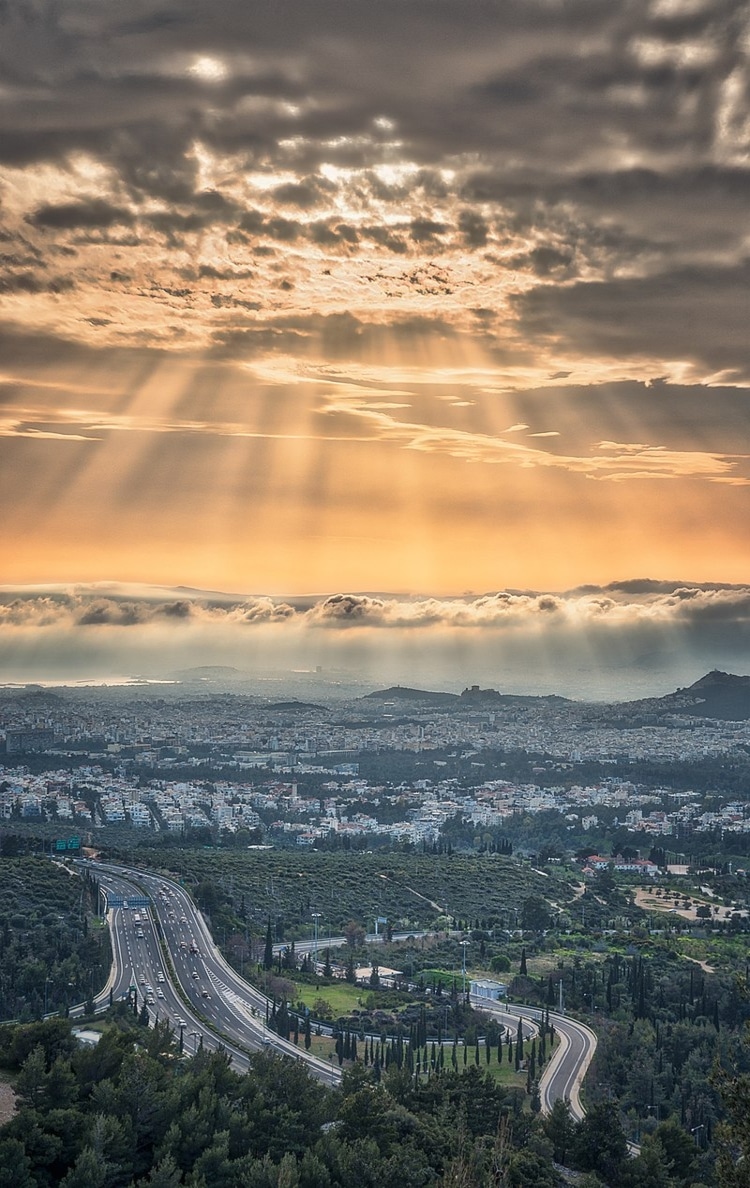Various areas in Athens and throughout Attica have seen their names change over time, with many even acquiring nicknames. This is also true for the mountains of Attica. Did you know that a popular mountain, often referred to as the ‘lungs’ of Athens due to its clean air, was once called ‘Crazy’? This is none other than Mount Hymettus.
Hymettus, the neighboring mountain of Attica
Mount Hymettus, the nearest and most cherished mountain of Attica, is a favored destination for Athenians, particularly on Sundays. Its proximity to Syntagma Square, a mere 7.5 km away, makes it a traditional recreational spot for the capital’s residents. What many may not realize is that this Attican mountain was deemed sacred by the Ancient Athenians. It’s no coincidence that they chose to place the statue of ‘Hymetius Zeus’ atop its highest peak.
This mountain is mentioned in the works of numerous ancient writers, ranging from Herodotus to Pausanias. It has been traversed and described by many foreign and later Greek travelers and naturalists. This interest led to the discovery and exploration of many large and small caves in the area. The ancient Athenians transformed many of these caves into shrines dedicated to Pan and the Nymphs. Later, Christians converted these ancient sanctuaries into temples, such as St. John the Hunter, St. John the Theologian, and the monasteries of Kesarianis, Taxiarches, Asterios, and Karea.
Why they called it ‘Crazy”
The Athenian historian D. Kambouroglou eloquently stated that Hymetius serves as a divider in Attica, separating the spiritual realm, represented by Athens with its iconic Parthenon, from the region known for its alcohol, specifically the Mesogeia, where the renowned retsina wine is made.
Yet, the locals of Athens often referred to Hymetius as “Crazy”, a term with various interpretations. One explanation suggests that in several Ottoman property titles, the phrase “Dedli-dag” translates to “crazy”. Furthermore, Hymetius has always been celebrated for its honey, which, apart from its distinctive aroma, color, and taste, has also been recognized for its medicinal properties since ancient times. But how does this name relate to honey? It is said that the bees of Attica would go into a frenzy upon detecting the scent of the mountain’s thyme, which might be the reason behind the mountain’s nickname, “Crazy”.

Photo Source: Spirosparas
Now, let’s explore a second theory. This one suggests that during the Florentine rule over Athens, upon hearing the word Imittos, they would say “il matto” or simply “matto”, which translates to “crazy” in Italian. This is believed to be another reason why the mountain was given this name.
Lastly, there’s a theory that the name Imittos originated from its former name “Telovouni”, meaning “last mountain”. It’s suggested that from “Telovouni”, the mountain was oddly and inexplicably renamed to “Crazy”, or “Trelovouni” in Greek.
The Ideal destination for a Sunday getaway
When you’re seeking a respite from the hustle and bustle of daily life without venturing too far, know that Imittos is there for you. This mountain in Attica serves as an ideal destination for day trips and tranquil moments amidst nature for the entire family. It offers a breath of fresh air, the opportunity for a picnic, and picturesque views for photography. You can spend a day feeling as if you’re far away from Athens, while actually being very close.
Tip: Bring your bicycle and explore the stunning mountain trails, which are particularly captivating in the spring.
External photography source: M.Perdiou
Travel to Greece – Google News – Follow us
Read Also:




